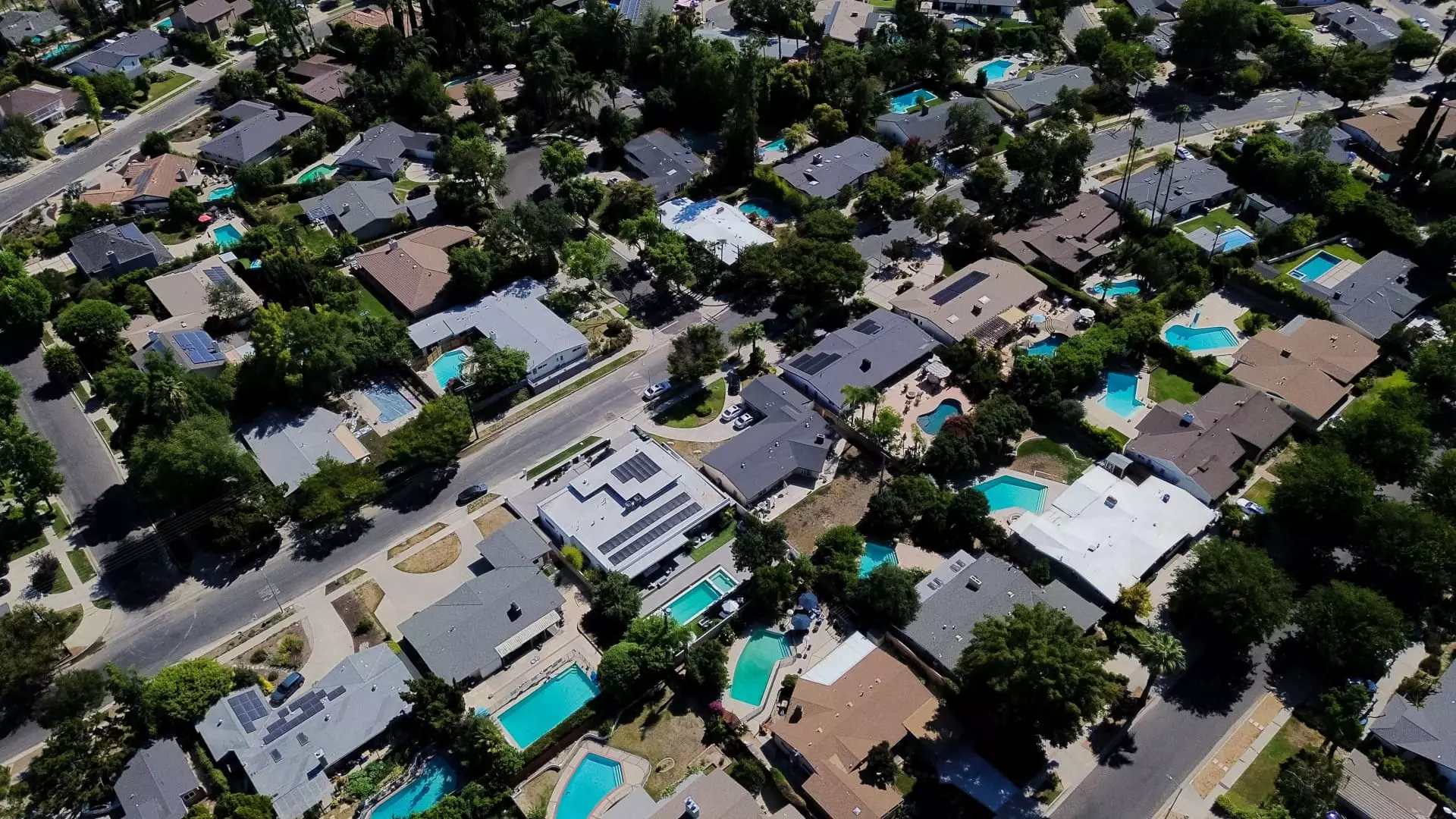The recent decline in existing home sales, registering a 2.7% decrease in June, painfully exposes the fragile nature of the U.S. housing market. Despite optimistic narratives about a resilient real estate sector, the truth is that seismic shifts are underway, driven by external economic pressures and a persistent refusal to address foundational issues like housing supply shortages. The market’s current condition suggests more than a temporary slowdown; it highlights systemic vulnerabilities that threaten to undermine long-term economic stability.
The stark reality is that sales levels are essentially stagnant compared to June last year, indicating a market trapped in limbo. This stagnation is not merely a function of rising mortgage rates but a reflection of manufactured fears stemming from economic uncertainty and regulatory inertia. While sales may appear resilient on the surface, closer analysis reveals a landmine of underlying problems that threaten to halt any genuine market recovery.
High Mortgage Rates: The Biggest Barrier to Affordability
A major obstacle confronting the housing sector is the stubbornly high mortgage rates, now hovering around 6.77%, stubbornly refusing to dip despite economic stabilization efforts. Lawrence Yun’s assertion that lower rates could spawn meaningful gains in homeownership misses the point; the real issue lies in the structural inability to bring rates down in a meaningful way, thus strangling affordability. When mortgage rates soar above 7%, the average family finds itself priced out of the market, especially first-time homebuyers. This is not a coincidence but a deliberate market dynamic that locks out a vital demographic, stifling social mobility and reinforcing economic inequality.
The persistent high rates serve as a de facto barrier, reinforcing a two-tier housing system where only the wealthy can navigate the current market. Wealthier buyers, frequently purchasing with cash, continue to dominate, snagging properties swiftly and pushing prices even higher. Meanwhile, younger or less affluent buyers are effectively pushed to the fringes, unable to participate in what should be a foundational element of economic upward mobility.
Supply and Demand: The Hidden Crisis in Housing Inventory
Although the number of homes for sale has increased by nearly 16% year over year to 1.53 million units, this uptick conceals a much deeper crisis — chronic underbuilding. The supply increase has not kept pace with population growth, perpetuating a market that remains tight and competitive. The six-month supply necessary for market equilibrium remains elusive, confirming that the U.S. housing arena remains a constrained environment favoring sellers over buyers.
Price escalation further exacerbates this imbalance. The median home price hitting an all-time high of $435,300 is a testament to the ongoing price inflation fueled by limited inventory and demand from affluent buyers. This relentless climb in prices, especially for homes above $1 million, underscores a growing wealth divide. The luxury market is thriving, while first-time buyers and middle-income families find themselves increasingly marginalized. The affordability crisis is thus baked into the system and demands more than superficial fixes.
Market Trends: An Unequal Playing Field
Despite an overall slowdown, the high-end segment continues to outperform, with sales of homes above $1 million soaring by 14%. Conversely, homes priced below $100,000 are down by 5%, illustrating the widening chasm between different socioeconomic groups. The days on market for homes have lengthened, but affluent properties still sell faster, reinforcing the notion that wealth continues to buy advantage in an increasingly elite-driven market.
The demographic composition of buyers reveals troubling signs. First-time buyers account for just 30% of sales, significantly below the typical 40%, reflecting a market skewed toward investment and wealth retention rather than genuine homeownership accessibility. The elevated share of all-cash deals — nearly 30%, compared to pre-pandemic levels of around 20% — further confirms that the market is increasingly dominated by investors and wealthy speculators, not everyday Americans seeking stable homes.
What Lies Ahead? An Uncertain Road
The current trajectory leads to a disconcerting future where housing becomes less attainable for the average American. Policymakers must recognize that superficial measures, such as minor increases in supply or slight mortgage adjustments, are insufficient. Instead, a transformational approach is needed to address underlying structural failings, including restrictive zoning laws, regulatory bottlenecks, and the chronic underinvestment in affordable housing.
Without bold action, the U.S. risks entrenching economic inequality even further, with homeownership becoming an exclusive privilege rather than a fundamental right. The illusion of a healthy market persists, but beneath the surface, an erosion of opportunity and stability is quietly unfolding, demanding critical and urgent intervention before the damage becomes irreversible.


Leave a Reply